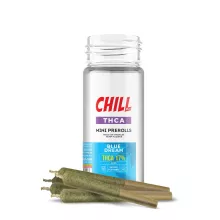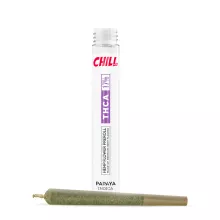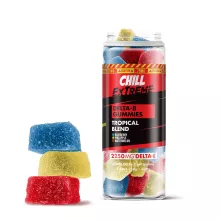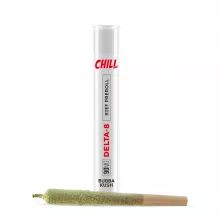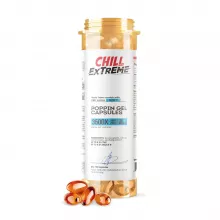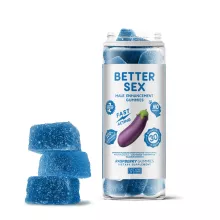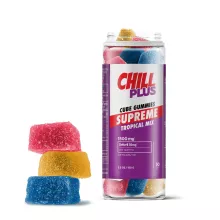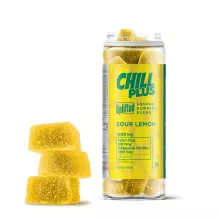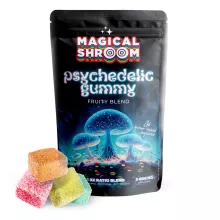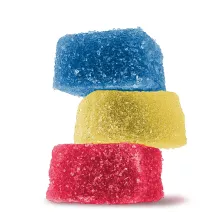Cannabis plants are undoubtedly a natural wonder; whether you love their buzzy compounds like THC or appreciate the incredible wellness benefits of CBD, there is simply no denying that cannabis is as unique as it is helpful.
Although the hype has largely surrounded cannabis’s psychoactive compounds for decades, CBD—THC’s non-psychoactive counterpart—has also begun to grow in popularity and amass a gargantuan following. Known for improving wellness, CBD (or cannabidiol) is a compound you don’t want to miss. But if you want to learn more about this heroic cannabinoid, stick around and read more!
This comprehensive guide seeks to answer all your CBD-related questions, including how CBD interacts with the human body, whether CBD shows up on a drug test, where the compound comes from, and much more.
Learn about the history, benefits, and legal status of CBD with Diamond CBD!
An Introduction to Cannabidiol: CBD 101
Cannabidiol, or CBD, is perhaps the most famous non-psychoactive compound found in cannabis plants. The United States government considers CBD “not impairing,” meaning it does not cause a high like other cannabinoids, such as THC.
In the United States, CBD can be marketed to consumers in many products, including:
- Foods
- Oils
- Lotions
- Capsules
- Cosmetics
- Edibles
- Vapes
CBD—and all the other cannabinoids in cannabis plants—affect the human body through their interactions with our endocannabinoid system, a unique communication network between the brain and body that affects many important functions, including how we feel, move, and react.
The question, however, isn't just what is CBD, but rather what is CBD good for, and how does it work?
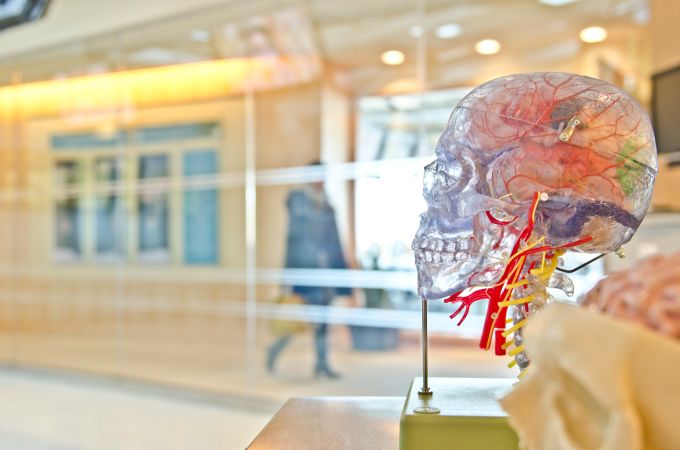
CBD & the Human Body: How Does it Work?
All of the cannabinoids in cannabis interact with our bodies thanks to our endocannabinoid system, a network of neurons that runs throughout our body and is loaded with receptors.
Cannabinoids are able to bind to these receptors when we consume weed, and the chemical interactions of these bonds create a wild (and largely unknown) series of responses in our bodies. The endocannabinoid system touches all of the major systems of the body, which explains why weed and its compounds can be so beneficial for humans, from altering appetites to reducing pain.
Even though cannabidiol is not intoxicating, it still remains highly reactive with the endocannabinoid system. When it binds to endocannabinoid receptors, CBD makes all kinds of things happen throughout the body—most of which researchers believe to be incredibly beneficial.
Benefits of CBD
Although THC is famous in stoner circles and among younger people, CBD has an undeniable claim to fame in a completely different realm. This compound has been used by humans for thousands of years, and even with today’s medical advancements, millions of people still swear by the cannabinoid’s wellness benefits.
So, what is CBD good for, and what makes it so beneficial?
Although additional research on CBD is required, some of its properties include:
- Anxiety and depression management
- Pain management
- Insomnia relief
- Better rest
- Anti-inflammation
As a matter of fact, one study observing almost 300 subjects concluded that CBD treatments have beneficial impacts on pain, anxiety, depression, and overall wellbeing for patients with moderate to severe symptoms.
Additionally, another study observed the efficacy of CBD as a treatment for epilepsy. Their evidence strongly supported the use of CBD as a therapeutic candidate for certain human epilepsies. Interestingly enough, even the FDA approved an epilepsy drug comprised of CBD called Epidiolex.
It’s worth noting, however, that further research still needs to be conducted on CBD’s full spectrum of properties and benefits. For now, the outlook is good!
The Effects of Cannabidiol Are Not Psychoactive
Although CBD and THC both come from the same type of plant, the main distinction between them is that THC is psychoactive, meaning it will get you high, whereas CBD does not cause any impairing effects.
THC is largely used as a recreational drug, as the compound promotes dopamine production and is commonly associated with waves of euphoria, anxiety relief, and appetite stimulation. That said, with the rise of medical marijuana, THC is also used in a non-recreational manner in states that have legalized its medicinal use.
CBD, on the other hand, is 100% non-psychoactive and is mainly used for its dozens of wellness benefits. Even though CBD is greatly beneficial, this compound will not get you high.
THC vs. CBD: What’s In Your Weed?
CBD Legality
Because cannabidiol is a non-psychoactive compound, CBD products can usually go around legal bans on marijuana. Technically speaking, it’s THC that’s illegal, not CBD. When you take a drug test, it aims to detect THC in your system, not cannabis-derived compounds as a whole.
Curiously, every state that has not legalized medical marijuana has some kind of law that allows people to obtain CBD products for medical or therapeutic purposes. In most cases, CBD can be obtained from hemp as opposed to marijuana flowers.
Individual states still restrict CBD to varying extents, but hemp-derived CBD oil is available in a widespread manner. In contrast, CBD derived from marijuana is only available in states where medical or recreational cannabis have been legalized.
Will CBD Show Up on a Drug Test?
Usually, CBD should not show up on a drug test. That said, it is possible for the compound to trigger a positive result.
Drug tests check for THC contents—the compound that makes people feel high. CBD products aren’t psychoactive and are typically THC-free. Despite this, CBD products can legally contain traces of up to 0.3% THC, which may yield a positive drug test result in some people.
Luckily, CBD products are a lot more varied than people may believe, and there are many types of CBD that can ensure interactions—or lack thereof—with compounds like THC.
High CBD Concentration Marijuana Available
There are several types of CBD products available for purchase online, each containing different content levels of THC—and all federally legal.
- Full-Spectrum CBD: This formula offers the complete perks of CBD as well as the more comprehensive effects of all the compounds and terpenes found naturally in hemp plants. Full-spectrum CBD products contain traces of other cannabinoids, including THC, and may trigger a positive drug test result depending on how fast your body metabolizes the compound. Even though it contains trace amounts of THC, full-spectrum CBD usually does not trigger psychoactive effects.
- Broad-Spectrum CBD: Similar to full-spectrum CBD, broad spectrum CBD products offer all the benefits of natural elements found in hemp except for THC. Offering a more extensive list of benefits than purer CBD formulas, broad-spectrum CBD also guarantees the absence of THC.
- CBD Isolate: The purest of our three CBD types, CBD isolate products are exactly what they sound like: pure, unadulterated CBD that contains no traces or any cannabinoids, terpenes, or any other elements found in hemp. This is the perfect way to enjoy CBD without worrying about interacting with other compounds.
It’s worth noting that full and broad-spectrum CBD products are largely considered as more beneficial to CBD isolate, but if you don’t want to interact with traces of psychoactive compounds like THC, CBD isolate is definitely for you!
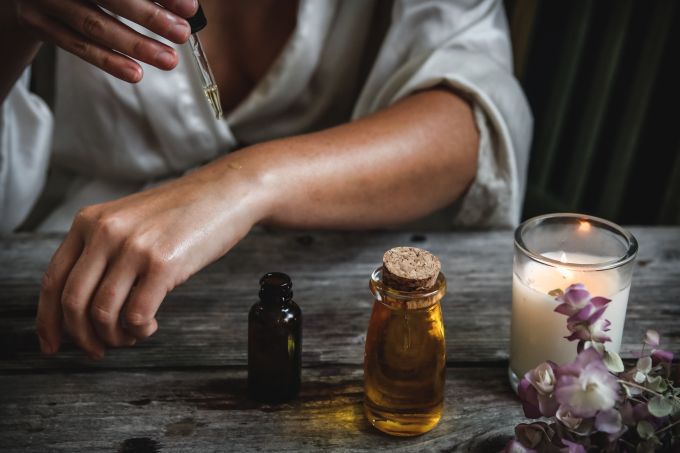
How is CBD Derived from Hemp?
There are many different techniques for extracting CBD from hemp, but one thing most processes have in common in the use of a solvent, which is a highly efficient tool for separating CBD molecules from other compounds found in the cannabis plant. Additionally, solvents are also helpful in purifying the solution. After the solvent evaporates, scientists are left with pure CBD oil.
While solvents may be a common theme in most, if not all, CBD oil extraction processes, these techniques do differ in their own ways.
CO2 Extraction
The most common method, and the one we use here at Diamond CBD, is CO2 extraction. Although this technique is a CBD lifesaver, it didn’t originate in the hemp industry. As a matter of fact, carbon dioxide extractions take a crucial part in making a bunch of your other favorite household items, like perfumes and food additives.
This method employs a closed-loop extractor—a system used to extract essential oils. The hemp is placed in a chamber that is later filled with carbon dioxide. By applying pressure to the chamber, scientists are able to turn carbon dioxide into a liquid, which then absorbs the hemp’s oils and flavors.
What we’re left with is a mixed liquid containing CO2 and CBD, which brings us to our last step: the final chamber where the carbon dioxide is turned back into gas.
This is one of the safest and most efficient extraction processes to date.
Alcohol Extraction
Another viable path to obtaining CBD is by using liquid solvents, such as ethanol, butane, or isopropyl alcohol. This is often argued to be the easiest CBD extraction method.
This process involves soaking plant material with the preferred solvent—usually ethanol—to extract cannabidiol. Soluble components are then separated from the plant material through filtration. Lastly, the solution is evaporated using low heat, leaving scientists with a concentrated CBD extract.
It may seem simple, but using alcohol-based solvents has its dangers. Some tests have shown that the solvent residue isn’t always eliminated after the evaporation process; additionally, users frequently report that oils extracted using alcohol have unpleasant tastes.
CBD Comes from Both Hemp & Marijuana
Thanks to the legalization of hemp under the Farm Bill, signed into legislation by former President Donald Trump, cannabidiol has become an increasingly common fixture in convenience stores, drugstores, and home medicine cabinets. Although cannabis produces more than a hundred compounds, CBD is one of its most well-known—and most sought-after.
Apart from legalizing hemp, the Farm Bill also creates a legal distinction between hemp and marijuana. They’re both types of cannabis, but hemp is defined by US law as having less than 0.3% THC, while a cannabis plant that contains more than 0.3% THC is classified as marijuana.
Apart from THC content, another difference between hemp and marijuana is the way they look. Hemp tends to be skinny and have sparse foliage, while marijuana has thick, lush foliage and buds that are usually grown and consumed for their psychoactive properties.
So, if CBD is non-psychoactive either way, is there really a difference?
Molecularly, no. Whether CBD is extracted from hemp or marijuana, the compound remains identical on a chemical level. Despite this, there are some key factors that differentiate hemp-derived CBD and CBD sourced from marijuana.
One important aspect to consider when examining the differences between CBD extracted from the two plants is resin contents. Usually, marijuana buds contain copious amounts of resin, while industrial hemp plants contain significantly less. Therefore, marijuana can be debated to be a more abundant source of CBD than hemp.
Extracting the same amount of CBD oil from hemp requires a lot more plant material than when it is obtained from marijuana. That being said, this isn’t always the case. Some emerging varieties of hemp possess unusually high concentrations of CBD, which contain between 12% and 20% CBD with 0.3% THC or less.
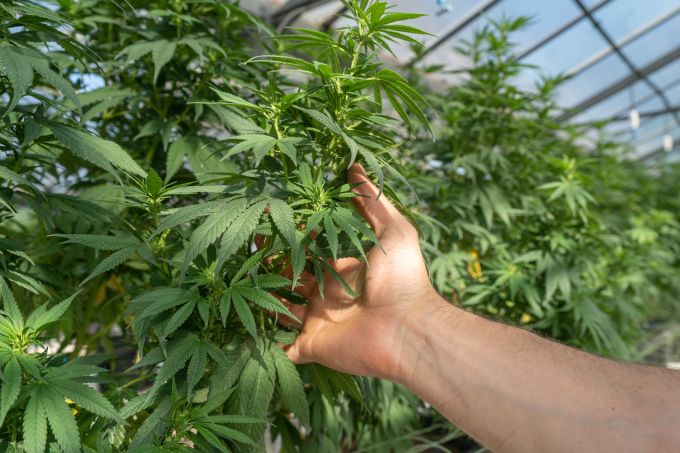
The History of CBD
We don’t have enough information to accurately and specifically discuss when exactly humans first discovered cannabis, but the recorded history of cannabis dates back thousands of years and spans over millennia.
The Origins of Cannabis
It’s generally theorized that the use of cannabis originated somewhere in Asia, with the first documented case of its use dating back to Emperor Shen Nung’s pharmacopeia in 2800 BC. Therapeutic benefits of the plant are also mentioned in Indian Hindu, Assyrian, Greek, and Roman texts. Ancient civilizations reported cannabis to aid in an array of health problems, including arthritis, depression, inflammation, pain, and lack of appetite.
Hindu legend regards the god Shiva as the ‘Lord of Bhang’, because the cannabis plant was allegedly his favorite food. They explained the wellness benefits of cannabis as a sign that they had pleased gods like Shiva.
Cannabis is thought to have been introduced to Africa by Indian Hindu travelers. It was already a popular crop among indigenous people in South Africa before European settlement in the Cape in 1652. By the 1850s, traders had introduced cannabis from the east coast of Africa to the Congo Basin in the west.
Cannabis in the US
The origins of cannabis plants in the United States can be traced back to the settlers in the original 13 colonies. Back then, hemp was grown like any other crop and used a resource to make clothing, rope, and sails. In 1619, the Virginia Assembly passed legislation requiring farmers to grow hemp.
By the mid 1800s, marijuana became widely accepted as a mainstream medicine and was an ingredient in many over-the-counter products. In 1850, the plant was added to the U.S. Pharmacopeia as a treatment for opioid withdrawal, pain, appetite stimulation, and nausea relief.
At the turn of the 20th century, marijuana was already a well-established ingredient in medication, but as Mexican immigrants reached the country and introduced the plant’s recreational uses, people began to fear the drug out of xenophobia towards the Mexican people.
Between 1914 and 1925, twenty-six states had passed laws prohibiting marijuana, and only a few years later, the Great Depression resulted in economic and political turmoil throughout the country. Stigma against Mexican immigrants grew, and the media began to report that marijuana use was linked to crime and violence. As a result of this smear campaign, all states developed some form of marijuana regulation legislature.
In 1937, the Marijuana Tax Act was passed, which restricted marijuana use only to those who could pay a heavy tax for industrial and medical uses. Five years later, marijuana was removed from the U.S. Pharmacopoeia and was discredited as not having medical benefits.
From the 1970s forward, many states began slowly but surely decriminalizing and legalizing marijuana for both, recreational and medicinal uses. But it wasn’t until 2018 that cannabis was federally accepted.
Under the Farm Bill, hemp-derived cannabinoids became federally legalized for distribution, allowing retailers like Diamond CBD to legally and safely source compounds like delta 8, delta 9, CBD, and many others from organic hemp.
Rediscovering CBD
In 1940, the organic chemist Roger Adams had separated CBD isolate from the rest of the plant, but he didn’t describe its chemical structure, so nobody—himself included—knew what he had actually found.
In 1946, Dr. Walter S. Loewe began isolating cannabinoids from marijuana and testing them on lab animals. His results indicated that CBD lacked psychoactive activity, as opposed to its counterpart, THC.
Although Dr. Raphael Mechoulam is best-known for being the first to identify the structure of THC in 1964, he did a lot more than that. He also identified CBD’s chemical structure in his laboratory the year prior.
Almost half a century and many scientific discoveries later, the United States government patented CBD as a neuroprotectant in 2003. Since then, more and more people have continued to vouch for the medicinal properties of the compound.
Most Popular Type of CBD Products
Cannabidiol has become a cannabinoid almost unrivaled in popularity and demand, and the compound is available in a plethora of ingestion methods, including vapes, edibles, oils, and others. All of these CBD products are popular for their own reasons, and even though they all offer the same benefits of CBD, they’ve each got their own independent quirks that make them attractive to different types of consumers.
CBD Oils
- Today, the most popular way to consume CBD is through oil. It can be consumed in a vast array of ways, but two of the most popular are placing a few drops under your tongue and adding it to food or drinks. Depending on how you consume it, CBD oil can be pretty fast to kick in.
CBD Edibles
- Edibles, including CBD gummies and other snacks, are one of the most popular ways to ingest CBD. Even though they take a longer time to kick in than methods like vapes and oils, they also intensify and elongate the duration of the compound’s effects.
CBD Topicals
- CBD creams, moisturizers, roll-ons, and more are extremely popular—especially among those who suffer from chronic pain or like to go hard at the gym. These products are the perfect way to localize the extent of CBD’s benefits to one specific area.
CBD Vapes
- Vaping CBD is also a classic way to consume CBD. Although it won’t get you high like other cannabinoids, a CBD vape is a good way to take advantage of the relaxing and soothing benefits of the compound.
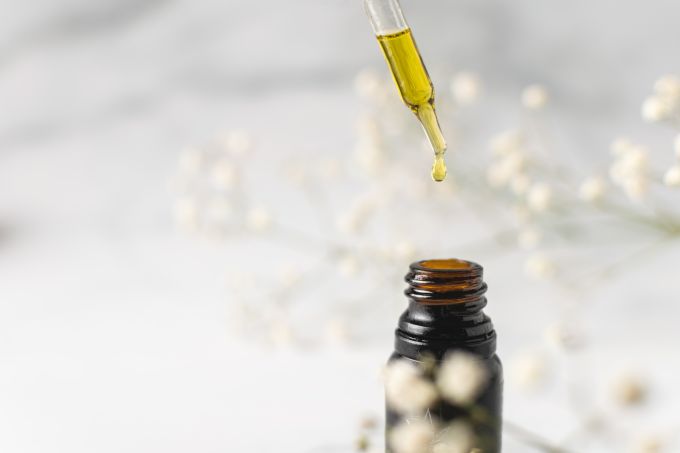
CBD’s Also Available for Pets!
CBD products are quickly growing in popularity for humans and pets alike. Just like us, our cats and dogs have endocannabinoid system, meaning that they can also enjoy the benefits of hemp; as a matter of fact, all mammals have endocannabinoid systems!
Based on human and veterinary literature alike, CBD for pets may help our furry friends in the following ways:
- Anti-inflammatory
- Pain management
- Reduction in seizure frequencies and intensities
- Immune system support
- Gastrointestinal support
- Anxiety relief
- Hyperactivity reduction
Can CBD Get My Pet High?
No! CBD not psychoactive, which means it doesn’t cause a high in humans or animals. Diamond CBD’s pet products are made with CBD isolate, meaning that they don’t contain traces of THC or any other psychoactive compound in cannabis.
That being said, it’s important to ensure your pet’s comfort and safety when it comes to dosing. Always remember to follow the instructions on your product’s packaging. It’s best to start low and test your pet’s tolerance before going for a heftier dose.
All About CBD: Final Thoughts
CBD is a groundbreaking cannabinoid willing and able to improve your wellness while leaving you clear-headed and ready to take on the day. Whether you take your CBD in oil, vape, or edible form, one thing’s for sure: this compound has an extensive list of properties that have proven to be incredibly beneficial to human beings—and it has been for thousands of years.
Being interested in CBD is an obvious reaction; wanting a little more information on the compound before trying it is only natural. And now, after reading this comprehensive rundown of what cannabidiol is, what it does, and learning about some of the more complicated nuances behind the compound, you’re hopefully equipped with the information you need to make an informed decision.
CBD is a legitimately promising compound seemingly on the brink of making waves in the world of wellness, and it might just be one of the most remarkable substances in the world. Who would’ve thought the coolest part of the cannabis plant is the one that doesn’t get you high?


